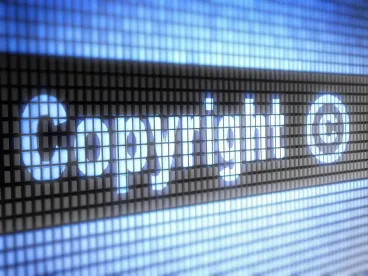When the Digital Millennium Copyright Act of 1998 (the “DMCA”) was enacted, the stated goal was to bring federal copyright law into the 21st century by providing certain immunities to internet service providers while preserving and even streamlining the ability of copyright holders to enforce their rights.
In the years immediately following the passage of the DMCA, things seemed to work smoothly. In particular, the notice-and-takedown procedure set forth in Section 512, which allows copyright owners to send written notices to parties who have allegedly used copyrighted content without authorization and which requires the recipients of such notices to promptly remove the content, was a useful tool that enabled parties to reach quick resolution of copyright disputes while avoiding costly litigation.
However, no one in 1998 could have predicted how the internet would grow exponentially and how it would dramatically increase in importance as a means of communication, advertising and marketing, and become a platform for retail sales, banking, and other commercial transactions as well as a source of entertainment, education, news and other information. As every company, organization, and educational institution, small and large, commercial and not-for-profit, as well as numerous individuals around the world, launched websites, the volume of copyrightable content that was accessible on the internet rose and, unfortunately, so did infringement. With the sharp annual increase in unauthorized use of online content and the number of DMCA notices submitted, the notice-and-takedown procedure proved to be less effective: content owners complained of being unduly burdened by the need to challenge repeat offenders. And, with millions of takedown notices being sent on a daily basis, certain online service providers were overwhelmed.
Over the past two decades, calls for reform of the DMCA have been on the rise. Although many service providers have expressed satisfaction with the current operation of safe harbors, there have been critics from both sides, i.e., service providers (including Google and YouTube) as well as rights holders and their representatives (including The Authors Guild and the Copyright Alliance).
The Copyright Office has been studying Section 512 for years, during which time it has participated in Congressional hearings, held numerous roundtables and invited comments, all in order to obtain feedback from stakeholders as to whether the statutory safe harbors actually provide “strong incentives for service providers and copyright owners to cooperate to detect and deal with copyright infringement that takes place in the online networked environment.”
The culmination of this study was the long-awaited report that the Copyright Office finally released on May 21, 2020. To the surprise of no one, the report concludes that the current safe harbor system is “unbalanced” and therefore out-of-sync with Congress’s original intent. The report makes a number of observations, suggestions and recommendations.
In particular, the report identifies the following areas where Section 512 is in need of revision, namely: eligibility qualifications for the service provider safe harbors; repeat infringer policies; knowledge requirement standards; specificity within takedown notices; non-standard notice requirements; subpoenas; and injunctions. Although the report does not advocate wholesale changes to Section 512, it does suggest that Congress may wish to consider additional legislation.
Additionally, the report identifies non-statutory areas that could potentially increase the efficacy of the safe harbor system. The report recommends educational initiatives, including the creation of explanatory materials, with the goal of reducing inappropriate takedown notices and counter-claims. The report also proposes that stakeholders work together to develop voluntary measures including best practices and protocols. Further, the report proposes that creators and online service providers cooperate to develop standard technical measures to “reduce the burden and increase the efficiency and effectiveness of section 512 for all stakeholders.” The Copyright Office recognizes that these proposals would require widespread voluntary cooperation across industries and recommends additional study before moving forward with any such proposals.
The Copyright Office report on Section 512 is a long overdue and essential effort toward improving the identification and resolution of copyright issues on the internet. Although we should not expect any immediate legislation or industry improvements in response, the report should be seen as an important first step in what will likely be a long process of reassessment that could lead to more effective and better-balanced procedures for copyright interests online.




 />i
/>i

